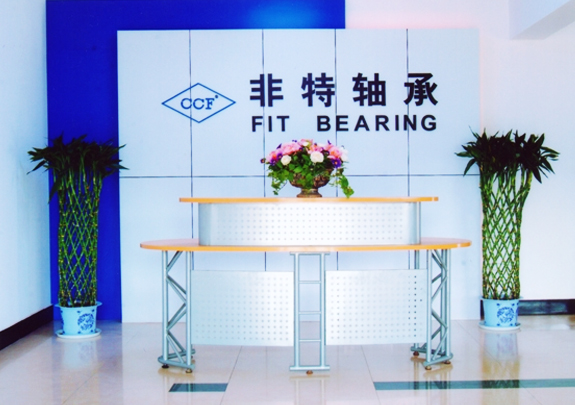Forging part
VIEW DETAILS
VIEW DETAILS
VIEW DETAILS
VIEW DETAILS
VIEW DETAILS
VIEW DETAILS

Zhejiang Fit Bearing Co., Ltd. was established in November 2003 with a registered capital of USD 2 million. The plant covers an area of 35,000 square meters and 20,000 square meters, with more than 120 workers and more than 20 technical management personnel.
At the beginning of its establishment, the company specialized in producing all kinds of low-noise long-life ball bearings. As a professional China Stainless Steel Forging Parts Suppliers and Stainless Steel Forging Parts Manufacturers, After years of development in the bearing industry, we have accumulated rich experience in production and management. In 2013, we began to vigorously develop agricultural machinery parts and construction machinery parts. At present, we have formed a team with exquisite technology and excellent management, capable of R&D, manufacturing, sales and service in the bearing industry and agricultural machinery parts. After years of hard work and development, we have formed a capable R&D and manufacturing team. They have rich knowledge and experience in materials, heat treatment, machining and grinding. There are currently 9 professional R&D engineers responsible for the development of new products.
The main shaft bearing is the most important component in the engine. If the main shaft bearing fails, it will directly cause the engine to stop running. In order to improve the reliability of the eng...
Read MoreBearing failure is a common problem during the operation of bearings, and the form of wear is a type of bearing failure. Wear can also cause significant damage to bearings, and repairing a few pieces ...
Read MoreThe working temperature of cylindrical roller bearings depends on various factors, including the heat output of all relevant heat sources, the heat flow rate between heat sources, and the heat dissipa...
Read MoreHow does the grain structure of stainless steel forging parts affect their overall strength and reliability?
The grain structure of stainless steel forging parts plays a crucial role in determining their overall strength and reliability. Here are the key ways in which the grain structure influences these properties:
1. Grain Size: The size of the grains in the stainless steel microstructure affects its strength. Smaller grain sizes generally result in higher strength due to a greater number of grain boundaries, which impede dislocation movement and enhance the material's resistance to deformation. Therefore, stainless steel parts with finer grain sizes tend to exhibit higher strength and reliability.
2. Directionality and Anisotropy: Forging processes introduce directional flow and deformation in the material, leading to a non-uniform grain structure. Stainless steel parts may possess different mechanical properties in different directions. Anisotropic grain structures can impact the material's performance, making it necessary to consider the orientation and alignment of grains to ensure optimal strength and reliability.
3. Grain Boundary Integrity: The quality and integrity of grain boundaries also influence the overall strength and reliability of stainless steel forging parts. Strong, well-defined grain boundaries help inhibit dislocation movement and enhance the material's resistance to deformation, improving its durability and reliability.
4. Impurities and Segregation: The presence of impurities or segregation within the grain structure can act as stress concentrators or weak spots, reducing the overall strength and reliability of the stainless steel part. Careful control of the forging process and material composition is necessary to minimize impurities and segregation, ensuring consistent and reliable performance.
5. Recrystallization and Grain Growth: During the forging process, stainless steel undergoes plastic deformation, which can result in grain elongation and strain hardening. Proper heat treatment after forging can induce recrystallization and controlled grain growth, which improves the material's strength, ductility, and reliability.
How does the design of stainless steel forging parts affect their performance and functionality?
The design of stainless steel forging parts has a significant impact on their performance and functionality. Here are a few ways in which design influences these aspects:
1. Shape and Geometry: The shape and geometry of the forging part determine its load-bearing capacity, stress distribution, and overall performance. Proper design can optimize the part's structural integrity, reducing the risk of failure under operational loads.
2. Dimensional Accuracy: Precise dimensional control in the design ensures that the forging part fits and functions correctly within the intended system or assembly. Inaccurate dimensions can lead to malfunctioning, poor fit, or even damage to other components.
3. Material Selection: The choice of stainless steel grade and its specific composition can vary based on the intended application and requirements. The design must consider factors like corrosion resistance, temperature resistance, strength, and durability to ensure optimal performance in the given operating conditions.
4. Surface Finish: The surface finish of stainless steel forging parts can affect their functionality in terms of wear resistance, lubrication requirements, and aesthetics. Properly designed surface finishes can enhance performance, reduce friction, and improve overall functionality.
5. Optimization of Stress Points: The design should consider stress points in the forging part and optimize the shape and material distribution to minimize stress concentration. This helps prevent stress-induced failure and improves the overall reliability and longevity of the part.
6. Coherent Design for Fabrication: The design should be coherent and suitable for the forging process to ensure efficient and cost-effective manufacturing. Forging-specific design considerations, such as draft angles, fillet radii, and proper parting lines, can affect the manufacturability and performance of the final product.